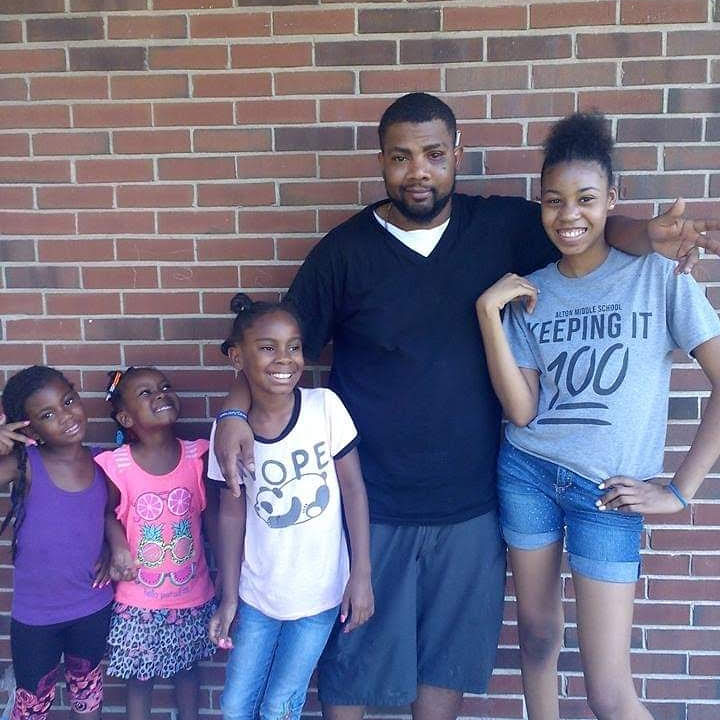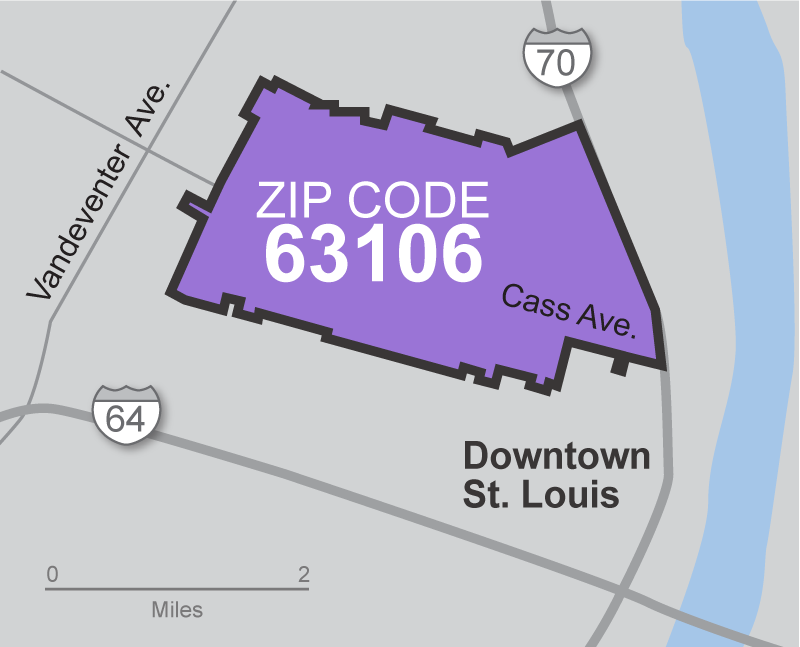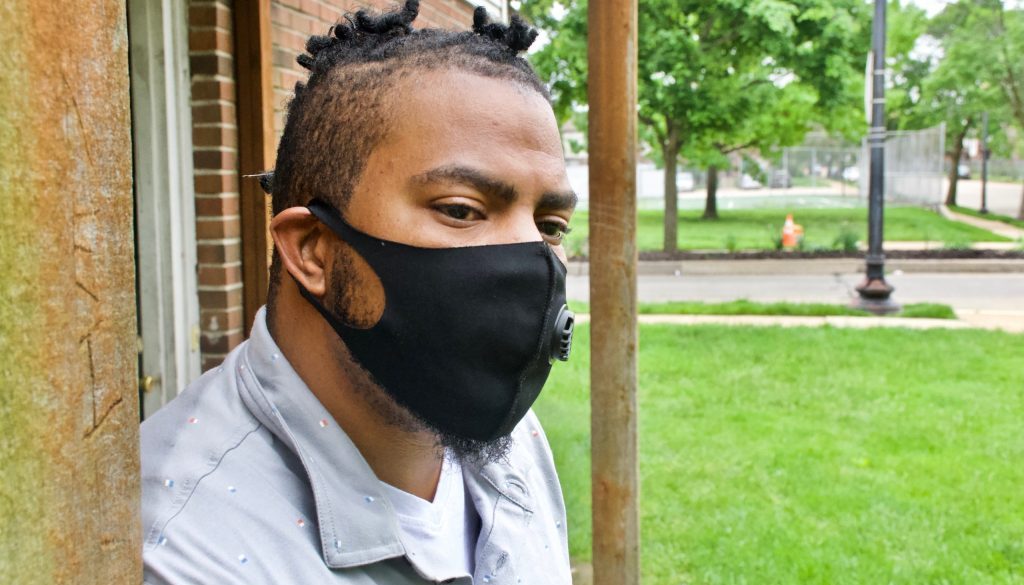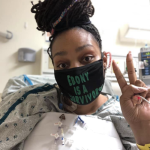In the time of the pandemic, the would-be science guy nurtures the dreams of his children.

This story first appeared in stlmag.com, with support provided through a grant from the Buckingham Strategic Wealth Pillar Grant Program. Additional support provided by the St. Louis Press Club.
By Jeannette Cooperman
Before Ferguson Beyond Ferguson
A nonprofit racial equity storytelling project
As a kid, Steven Jones was smart and a little nerdy, an only child who secretly wanted to be Bill Nye the Science Guy.
Now he’s 33, unemployed, disabled, and facing a global pandemic that none of the scientists can quite explain. His fiercest hopes are for the careers his daughters might pursue—doctor, lawyer, journalist—whatever gives them a foothold on a future as bright as the one he’d once envisioned for himself.
A military brat with a strict single mother, Jones says he “dressed properly, didn’t sag. She kept me very structured, in a smaller box than other children.” He didn’t know his dad and doesn’t remember his birthplace, Frankfurt, Germany; the memories start with a succession of military bases in the States. By middle school, his mom had moved them home to St. Louis because her mother had fallen ill. They stayed on the South Side, and Steven was bused out west, to LaSalle Springs Middle School in Wildwood, then to Eureka for ninth grade.
That was a different world. “The stuff at the school was great, but the people didn’t understand us, ’cause we were just from that other side of town. And they got Six Flags in their backyard. I mean, what do you expect them to be like? ‘Every one of y’all have a Six Flags pass for the next five years, and you get in your brother’s car and drive there and have fun, and we go find some park.’”
He was in class with those kids the morning of September 11, 2001, when his mother called and said, “I’m coming to get you.” He transferred to Normandy High School on September 12 because his mother had been hired by the U.S. Department of Defense.
Normandy was worse, though. “I thought, ‘I gotta go through this for another two years?’ Without telling his mother, he took the GED test as a sophomore—and passed. After that, bored by classes, he “started hangin’ with the wrong crew and started making money. And then, when I should have been a senior, I made a baby.”
He decided he’d better go to Job Corps and learn a trade. His Bill Nye dream was long over: “I’d found out a lot of the things we thought we knew really weren’t science, just a bunch of people who thought that way. When I started researching and found out no one really knew, nothing became real anymore.
“I said, ‘Hey, Mom, I’m kind of on this journey to find truth.’ She’s so militant and by the book—Department of Defense, Captain America [he laughs] that she never had that thought process.” He stops, considering. “Then again, maybe she did, but because she was so compartmentalized in her job for so long, to pay her bills, she was all right with it. Anyway, I told her, ‘I just don’t feel like going to school for a $80,000 bill to maybe make $80,000 a year. It’s different from when y’all grew up, when the harder worker made the most money.’”
His mom was still trying to take it all in. “What have I been giving you lunch money for?” she blurted.
Jones chose culinary training, figuring people would always have to eat, and at 21, he was hired at the Bridgeton Red Lobster. Four years later he was a grill master.
By then, his girlfriend had taken their daughter, Nevaeh, to North Carolina. “We were in what I thought was a happy relationship,” he says, still bemused. “One day I wake up, and she’s not there. I had our daughter until she was about 2 and a half. No contact, nothin’. The mother finally pops back up—and I come home, and my daughter’s gone. There’s a letter. She moved to North Carolina.”
He was with another woman, and they had two daughters, when, at 25, he had his first grand mal seizure.
“It lasted five days,” he says, “and I had to learn how to walk afterward.” He missed the birth of his fourth daughter, Yah’el—first time he hadn’t been there. “My neurologist told me that if I hadn’t had the muscle memory from being a football player, and the hand-eye coordination, my brain and body would never have reconnected right,” he says. “There were times when I’d think I was talking to you, and it would be coming out ‘blah-blah-blah.’”
After a year of rehab, Jones tried to go back to work but couldn’t handle the fatigue. Eventually, high-dose medications brought the seizures to a stop. He tried a few more times to work, but the only jobs he could find were too physically demanding.

Then, in 2018, his first girlfriend abruptly dropped Nevaeh, now age 12, at his door. He was thrilled: “I got her enrolled in school here. She’d been having reading problems, and it turned out she couldn’t see. I took her, and she needed a triple bifocal. So the second month of school, her reading comprehension’s better, her teachers are calling me saying she’s excelling. And one day I’m waiting for her to get off the bus — and she’s not there. Her mother came and got her. ‘So you just wanted to have a free summer?’”
Around the same time, a red-white-and-blue flyer came in the mail, saying, in essence, You have a right to work. Don’t let a disability stop you. After child support for four children was deducted, Jones’ disability check barely topped $400—yet his rent was based on the full $772. And with the girls visiting all the time, $175 in food stamps never went very far. So he called.
Jones knew there was a limit on how much he could earn, but he didn’t realize that included his full disability check, before deductions. In a few pay periods, he worked extra to buy his girls presents—and then came the letter. He’d lost his Medicaid, disability, and food stamps.
He was able to find a slightly better-paying job, driving a scooter around the garage above the Schnucks Culinaria downtown, picking up trash. Then, this February, he learned of a janitorial opening at the Boeing Learning Center, in Florissant. It meant a two-hour bus trip each way, but it would pay $18 an hour. He’d just finished the training when the county went into lockdown.
“And because I never received a first paycheck, I’m not unemployed by them,” he adds, his tone weary. Now he has no disability or unemployment.
Jones quickly paid his electric bill, “because you can go three months without paying rent, but if you get your lights cut off, it’s 30 days and you’re evicted. That’s why you gotta have some money saved; I don’t care if it’s change in a drawer.”
In April, Nevaeh’s mother called to ask if he wanted Nevaeh to come up for her birthday. “With COVID stuff going on?” he burst. “You want to put her on a bus from there to here?” All he could imagine was his child alone in a pandemic on a bus that stopped every 10 miles. “She’d go into Burger King to use the bathroom and come back out and the bus gone!”
During quarantine, they’ve kept in touch by phone. That phone’s been her lifesaver, he says. “She’s TikTok dancing all day!” Until schools closed, the younger girls were going to Pierre Laclede Junior Career Academy, on Goodfellow, and Jones says he was there a lot: “All public schools, especially in the black neighborhoods, need more men in the schools. It’s just too much feminine energy!”

His second-oldest, Ali’yah, misses school desperately. “She says, ‘Daddy, I’ve read all my books!’ She loves learning. She saw me with seizures, so she wants to learn to be a doctor so she can fix my brain. And she wants to be a lawyer—which I understand, because we were staying in Ferguson when the Michael Brown situation happened—and a journalist. I said, ‘OK, baby girl, sounds like I’ll be paying for school for a while, but OK!’”
Nine-year-old Zak’Yah is staying cheerful, playing on her tablet, and for Yah’el, who’s just turning 6, “it’s whatever her sisters are doing. She just wants to be part of the party.” Jones chose all the girls’ names himself: “I was raised up in the church, but I’ve been runnin’ from that for a long time—and I wasn’t so great around the baby-making stage. So I gave all my daughters names that had some kind of reference to God—like, ‘Hey, I’m going to give them to you. Even though I messed up all my life, they’re yours.’”
For himself, he’s resigned to COVID-19’s risks, but when his daughters visit, he does more cleaning and laundry than he’s ever done. “They say, ‘Don’t be close to people, don’t breathe around people, don’t touch,’” he remarks, “but now y’all are going to reopen the state? And what are you reopening? How was Burger King drive-thru open but not where I get my ID, not the government buildings?”
If he does get sick, what will he do? “I’m going to be honest. I never really trusted health care,” he says. “I think African-Americans don’t trust anything that was never built for them from the jump. If it wasn’t for us, it was against us. We have been spoon-fed the worst foods. We are the people that need the health care the most, yet we always get the worst plans. We get the worst deals, the highest interest rates. My copay for a colonoscopy was $500. Then what the hell’s the insurance for—minor stuff I can fix with home remedies? I need the stuff y’all went to school and wear the white suit for!”
Told that this project was inspired by a study comparing his 63106 neighborhood with Clayton’s 63105, Jones isn’t surprised by the difference in life expectancy. “Eighteen years,” he muses. “That’s a lifetime of experience by itself.” He swiftly sees the implications for COVID-19: “Living down here, you’re not going to be secluded. Out there, you, your wife, and your kids have their own cars, and if you have a job, it’s most likely somewhere that has taken the right precautions.”
Is he worried about getting sick? “Honestly, no, because I have yet to know anyone personally or anyone who knows anyone personally that’s gotten it, anything past being sick.”
He can guess one reason the rate is roughly 2.7 times higher among African-Americans than whites: “Have you not seen the hair stores and nail salons open? Ain’t nobody rollin’ into those neighborhoods saying, ‘Hey, you’re not following quarantine.’ They don’t feel that we’re necessary.”
Focus on 63106

Among a population of 11,221:
50% live below poverty line
45% live without a vehicle
50% live with a disability
- Future home of National Geospatial Intelligence Agency
- Old site of the Pruitt-Igoe housing project, where a small hospital/clinic is promised.
- Several St. Louis Public Schools, including historic Vashon High, the Flance Early Childhood Center, and charter schools.
- Affordable housing developments, including Carr Square Village, Preservation Square, Murphy Park, and Cochran Plaza.
- Numerous churches, including Calvary Missionary Baptist Church, Faith Temple, Progressive Missionary Baptist Church, St. John Missionary Baptist Church, and St. Stanislaus Kostka Church.
About Before Ferguson Beyond Ferguson
Before Ferguson Beyond Ferguson, a nonprofit racial equity project, is telling the story of families in 63106 one by one during the pandemic. Steven Jones’ story is one of as many as 10 that will be shared with St. Louis media outlets for what will likely be months to come. Visit stlmag.com for further dispatches from Jones’ life, and find an archive of other stories at beforefergusonbeyondferguson.org




